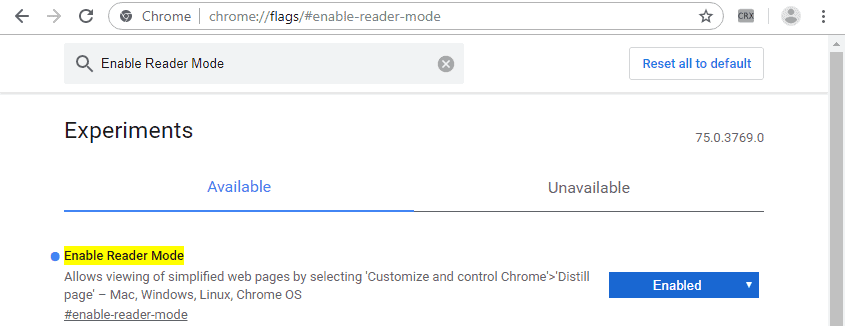Google Chrome 75: Google released version 75 of the program today tours Chrome. The new version is available for all platforms: Android, Chrome OS, Linux, Mac and Windows.
The majority of new features and changes to Google Chrome 75 seem to focus only on adding new internal APIs and updating the features already in the browser.

But while Chrome 75 seems to feature no new ones functions, there is something very worthwhile.
A big new feature is included in Chrome 75: The addition of a hidden reading mode (Reader Mode), similar to what Firefox has.
At this time, Reader Mode is not enabled by default and should be enabled using one of Google Chrome's experiment flags. This flag until recently was only available on Canary versions of Google's browser.
To turn on and test the new one Reader Mode of Chrome, you need to open the following internal address and enable Reader Mode as shown in the picture.
chrome://flags/#enable-reader-mode

When you enable the flag, you will also have to restart your browser.
Reader Mode can be used on any page, although it works best with pages news. Για να χρησιμοποιήσετε τη νέα λειτουργία, θα πρέπει να κάνετε click στο αναπτυσσόμενο μενού του Chrome επάνω δεξιά και να επιλέξετε την επιλογή "Distill page".
Except for adding it Reader Mode, Google's developers also repaired a security flaw known as 'evil cursor' bug. That particular error first appeared in 2018.
See below the presentation video of the new version released by the company:
_______________________
- Windows 10 Change the color of highlighted text
- And Xiaomi hides the front camera behind the screen
- I2P: Tor; No thanks! Dark Web migrates





